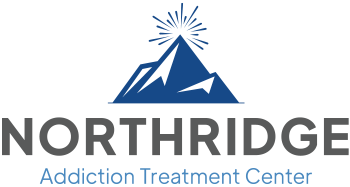What Is Post-Acute Withdrawal Syndrome (PAWS)?

Post-acute withdrawal syndrome (PAWS) lasts from a few days to a few weeks. Protracted withdrawal syndrome (PWS) can last a couple of months or years. The harm caused by using too much of a substance doesn’t happen all at once, and fixing the damage from addiction takes time, too.
Sadly, part of getting better can include some lasting effects that stay even after the first withdrawal and treatment are over. The symptoms of post-acute withdrawal syndrome don’t usually include life-threatening complications, but they can be difficult enough to experience a severe risk of relapse for people in recovery.
Not everyone experiences PAWS as they get better. But it happens often enough that people need to know what might happen and good ways to handle it if you or someone you love is experiencing PAWS. This knowledge keeps recovery going for a long time.
What is Post-Acute Withdrawal Syndrome?
Post-acute withdrawal syndrome (PAWS) is also called long-term withdrawal. A bunch of ongoing mind-related symptoms can last weeks after someone first stops using alcohol or drugs. People who are trying to get over a strong need for addictive substances like benzodiazepines, cocaine, opioids, and especially alcohol are most likely to get PAWS. Symptoms of alcohol withdrawal are known as alcohol withdrawal syndrome (AWS) and mimic the effects of PAWS.
Right after someone stops using addictive things, they usually get acute withdrawal symptoms. These first effects of the withdrawal stage are primarily physical symptoms, as the body gets rid of the alcohol or drugs and starts to heal.
Post-acute withdrawal is like another stage of getting better, but it happens in the mind more than the body. Being addicted to alcohol, stimulants, benzodiazepines, and opioids can change the way the brain and central nervous system (CSN) work, and this can make mental health problems worse.
When the brain and CSN try to return to normal, there can be good and bad times. This can cause cravings to come back, mood changes, and rebound symptoms. Rebound symptoms are when mental health issues that were hidden by the substances come back.
Some PAWS symptoms can also start because of stressful events and talking with people, especially for those who don’t have good ways to handle stress.

Understanding Post-Acute Withdrawal Syndrome (PAWS)
Understanding post-acute withdrawal syndrome (PAWS) is challenging because it’s hard to measure and see the psychological troubles and cravings as we can with physical withdrawal signs. Officially, big health manuals don’t list PAWS as a condition. But experts in addiction treatment and mental health know it’s real. They work hard to get those recovering ready to handle it.
PAWS shows itself in different ways. Some signs are closely tied to the specific substances a person has stopped using. Others are more general mental health issues. This makes it hard to set clear rules for diagnosing it.
During recovery from substance abuse, people often report cravings, mood swings, and feelings like anxiety, anger, and sadness as part of PAWS. Even though it’s not officially recognized, addiction professionals see these as signs of post-acute withdrawal, which can lead to using the substance again.
Many people first used alcohol or drugs to try to fix their problems. They might wrongly think going back to these substances is the only way to feel better from PAWS. Going back to using after a long time of not using is risky. This is because their bodies aren’t used to the substance, which can lead to taking too much by accident.
It’s super important for people to learn about acute withdrawal and post-acute withdrawal syndrome and to have a plan to avoid using again.
Post-Acute Withdrawal Syndrome Symptoms
Post-acute withdrawal symptoms and the risk factors vary from person to person. This depends on the substance, their body, any other health problems they have, and their past experiences with withdrawal and detox.
Post-acute withdrawal syndrome’s common symptoms include:
- Mood changes
- Worry
- Panic attacks
- Feeling restless
- Wanting alcohol or drugs
- Less or no interest in sex
- Feeling tired
- Sleep disturbances
- Trouble focusing
- Feeling hopeless
- Inexplainable pain
Even though some of these might seem like normal life problems, for people with PAWS, they come on quickly and can feel strong. Some say it’s like being on a rollercoaster with significant peaks and valleys.
Long-Term Symptoms
While PAWS usually lasts long, some symptoms can last even longer or remain there. People need good ways to take care of themselves and handle these symptoms to stop them from going back to using substances.
Long-term symptoms of PAWS are emotional and psychological symptoms, including:
- Not feeling motivated
- Anhedonia, or not being able to enjoy things
- Forgetting things
- Having a hard time learning new things
- Trouble solving problems
- Thoughts that keep coming up when you don’t want them to
- Hard to maintain long-term relationships
- Not interested in hobbies or fun activities
- Not good at controlling what you do suddenly
- Getting angry suddenly
- Reacting too much or too little to things
- Feeling sad
- Feeling worried
- Thinking about harming yourself
Many PAWS symptoms aren’t physical, especially those that last a long time. Some might not seem connected to problems with using too much alcohol or drugs. That’s why it’s crucial for recovery programs to teach people about PAWS and how to handle it.

How Long Does Post-Acute Withdrawal Syndrome Last?
The duration of post-acute withdrawal syndrome (PAWS) varies from person to person. Given the intermittent nature of PAWS symptoms, it’s difficult to set a definitive timeline.
Some individuals who have successfully battled alcohol use disorder have reported that it took up to three years for their sleep patterns to return to normal, even though other PAWS symptoms had subsided earlier.
While it’s impossible to forecast who will suffer from PAWS and for what duration, some measures can be taken to lessen the likelihood of triggering specific symptoms and mitigate their effects.
A few strategies for preventing PAWS include:
- Seek medical detoxification for symptoms of alcohol and drug withdrawal, succeeded by a treatment plan grounded in scientific evidence
- Pursue a dual diagnosis and appropriate therapy for concurrent disorders
- Stay away from circumstances, individuals, and locations linked with substance or alcohol use
- Regularly participate in 12-step facilitation gatherings and support groups such as group counseling for continuous assistance and support
- Implement self-nurturing and constructive coping mechanisms to manage stress
- Ensure you have a fallback strategy and a support system to lean on when symptoms of PAWS manifest
Inpatient treatment programs offer many resources and learning opportunities to help you prepare for potential PAWS. They also help you build a support system and develop healthy routines.
Long-Term Recovery at Northridge Addiction Treatment Center
Choosing to stop using drugs and alcohol is a big change and a brave step. When you’re ready, Northridge Addiction Treatment Center (NATC) is here to help you with caring, evidence-based treatment.
We have medical detox in our comfortable facility to make sure your first steps away from substances are safe. You’ll get medical care and support all day and night. We also look at and treat any other health issues that might be linked to your substance use.
Our skilled team will work with you to make a treatment plan that gets to the heart of your addiction. We’ll help you learn how to handle challenges in the future with strength and confidence.
While you stay in our residential treatment center, we ensure you have time to rest and have fun. We help you build a community and support network with other residents through group therapy and activities. We aim to give you all the skills you need for a long and happy recovery.
At NATC, we start the journey that leads to a life of recovery. Get in touch with us today. We’re ready to answer any of your questions to help you or your loved one get better.
Find Meaningful Recovery
Our caring and compassionate specialists are eager to help you comfortably navigate this journey to recovery. Our individualized treatment plan, programs, and therapies may be a perfect match for you or your loved one. Let us assist you in living the happy life you deserve. It starts with a phone call.




